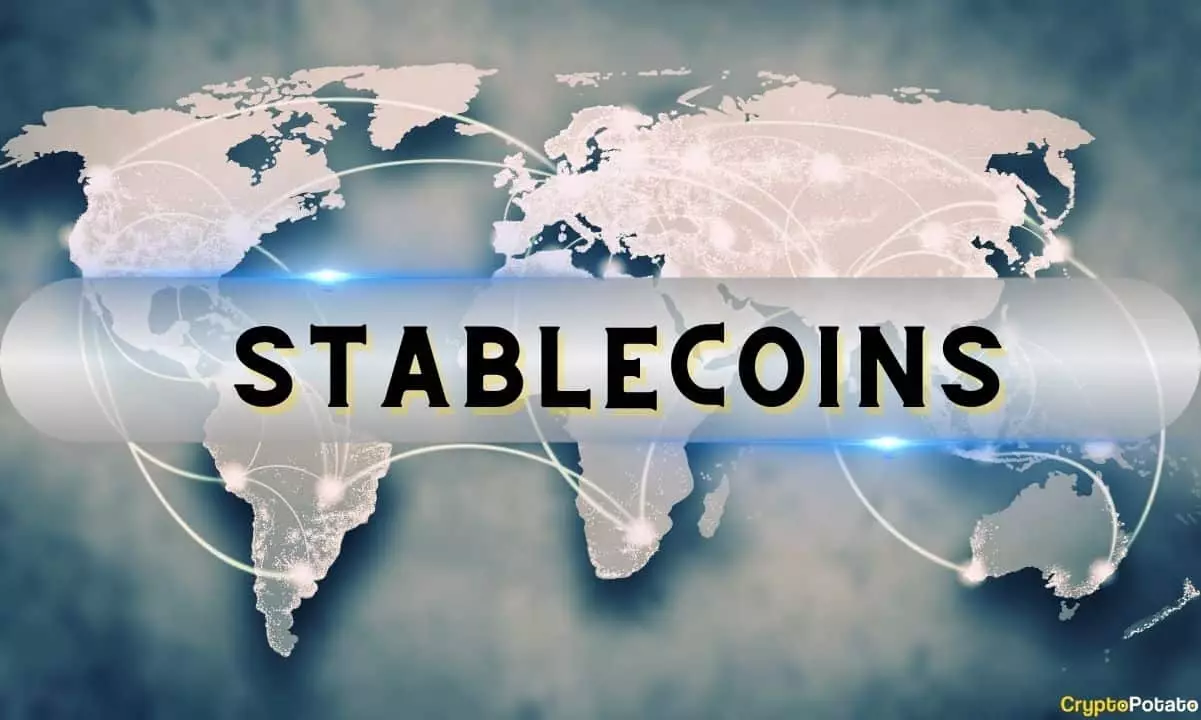The world of finance is witnessing a remarkable transformation, particularly in the realm of stablecoins. Recent data released by DefiLlama highlights a staggering 46% increase in the global market capitalization of stablecoins, elevated to an unparalleled $191.6 billion. This robust growth is underpinned by two dominant players, Tether (USDT) and USD Coin (USDC), which together command a substantial share of this burgeoning market, integral to the ever-evolving landscape of cryptocurrencies.
The trend of expansion within the stablecoin market is not a fleeting occurrence; rather, it reflects a sustained bullish sentiment. Over the last 12 months, stablecoin issuance has consistently accelerated, culminating in a remarkable 50% uptick from the onset of 2024. Such development indicates a growing acceptance and integration of stablecoins into mainstream financial transactions, a turning point for an industry that has, just a few years back, faced existential threats.
Tether, being the largest issuer of stablecoins, has accelerated its growth trajectory, with USDT tokens circulating approximately $133 billion. This feat results in Tether commanding nearly 69% of the global stablecoin market. Its primary competitor, USDC, has also made substantial inroads, with a market value surging to $39.5 billion from $24 billion at the close of 2023. Together, these two entities represent a considerable portion of the market—approximately 90%, signifying their pivotal roles as anchors in a tempestuous cryptocurrency ecosystem.
The recent history of stablecoins paints a contrasting picture. Following the collapse of TerraUSD in 2022, which resulted in a significant market downturn, there was a palpable sense of caution in the crypto space. Nonetheless, the resilience demonstrated by stablecoins has ushered in a new phase of growth, particularly as total stablecoin value rebounded to emphasize a market serene from the chaotic days of instability.
A noteworthy development fueling stablecoin interest is the shifting regulatory landscape, particularly in the United Kingdom. The country is on track to establish a robust regulatory framework for cryptocurrencies by 2025. Economic Secretary Tulip Siddiq has expressed optimism regarding the Labour government’s ambitions to facilitate a friendly environment for crypto transactions, marking a departure from the stringent regulations imposed under the prior Conservative administration. This regulatory clarity is pivotal, expected to stir innovation while ensuring consumer protection.
Moreover, there is a growing belief that stablecoins could revolutionize global trade, especially in cross-border transactions. Tether, for example, has marked significant steps to bridge traditional businesses and cryptocurrencies. Its recent foray into facilitating crude oil transactions demonstrates its potential to settle large, cross-border deals, positioning stablecoins as indispensable tools in global commerce.
As the stablecoin market continues to gain traction, it heralds not just the maturation of cryptocurrencies but also signifies a transition towards a new financial paradigm. The dual dynamics of substantial market growth and favorable regulatory developments position stablecoins as crucial components for the future of digital finance. Investors and stakeholders will need to remain vigilant as this sector evolves, but the signs indicate that stablecoins are here to stay, potentially reshaping the fabric of international trade and finance in the years ahead.


Leave a Reply